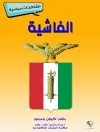This book explores seven centuries of change in Cyprus and the Eastern Mediterranean world through the rise and fall of Famagusta’s medieval Armenian Church. An examination of the complex and its art escorts the reader from the era of the Crusades in Lusignan Cyprus, through the rise and fall of the Venetian, Ottoman and British Empires, to the political stasis of the present day. The Armenian church was a home for displaced villagers during the post-independence era, became a military storage facility post-1974 and eventually fell into abandonment once again.
This study represents a pioneering history of the Armenian community in Famagusta and a probing analysis of the art and architecture it left behind. It is also a permanent record of the long-term engagement and commitment of Nanyang Technological University Singapore, the World Monuments Fund, and the Famagusta Municipality to protect this precious site, under extremely challenging circumstances.
Innehållsförteckning
Foreword: Famagusta and the World Monuments Watch: Responding to a Call for Action.- 1. Introduction: The Armenian Church Project: World Heritage in an Unrecognised State.- Part I: Interpretation and Analysis.- 2. Famagusta: A Lifeline for the Kingdom of Cilician Armenia.- 3. The Armenian Monastic Complex of St. Mary, Famagusta.- 4. The Medieval murals of Famagusta’s Armenian Church in Light of Recent Restorations: Art-historical Remarks.- 5. On the Interpretation of the Crosses Carved on the External Walls of the Armenian Church in Famagusta.- 6. The Architecture of the Armenian Church and Convent.- 7. Duthoit’s Famagusta and his Sketch of the Armenian Church.- Part II: Conservation, Education and Diagnostics.- 8. Endangered Cultural Heritage in an Unrecognized State: Voices from Famagusta.- 9. Spatial Analysis of the Armenian Church in Medieval Famagusta.- 10. Ground Penetrating Radar and Mapping the Monastery Complex.- 11. In Situ Investigation and Stability Analysis of the Armenian Church in Famagusta.- 12. Laser Imaging in the Armenian Church.- 13. The Conservation of the 14th Century Murals in the Armenian Church.- 14. Scientific Examination of the Armenian Church Wall Paintings, Famagusta.- 15. Teaching Cultural Heritage of ‘Others’ and Making it ‘Ours’: The Power and Controversy of Heritage Education – the Armenian Church of Famagusta.- 16. Emerging Computer Technologies for Cultural Heritage: The Armenian Church, Famagusta.- Part III: Complexity and Heritage: Future Research Perspectives.- 17. Towards a Complexity Framework for Heritage Futures: The Case of Famagusta, its Armenian Church and SHIFT.- 18. Afterword: From Delhi to Famagusta and Beyond.
Om författaren
Michael J. K. Walsh, who led this project, has edited and co-edited several books on Famagusta, including
Medieval and Renaissance Famagusta (2012),
Crusader to Venetian Famagusta (2014) and
City of Empires: Ottoman and British Famagusta (2015). He is Associate Professor of Art History in the School of Art, Design and Media at Nanyang Technological University, Singapore.












